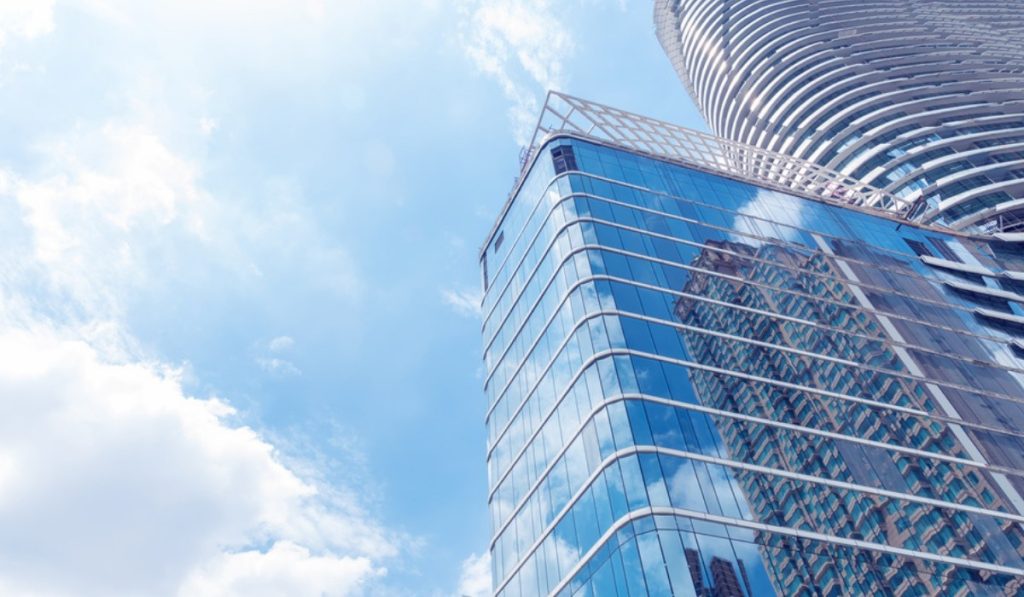
Bulletproof Glass
Bulletproof glass, also called ballistic glass, is a high-security material made by layering glass with synthetic materials like polycarbonate. It’s used in commercial properties where security is crucial, such as banks, jewelry stores, and high-security offices. It offers excellent protection against gunfire and other forms of attack, ensuring safety for both employees and customers
Artificial Glass for Commercial Properties
2. Heat-Strengthened Glass
Heat-strengthened glass is similar to tempered glass but not as strong. It’s produced by heating the glass to a high temperature and then cooling it, which makes it stronger than regular glass. It’s used in commercial applications like storefronts, curtain walls, and windows, offering a higher resistance to thermal breakage and impact than untreated glass.
3. Reflective Glass
Reflective glass features a reflective coating that helps to control glare and reduce solar heat gain in commercial buildings. This glass is widely used in large office buildings, skyscrapers, and retail centers to reduce the impact of the sun’s rays, improving energy efficiency by minimizing the need for air conditioning.
4. Spandrel Glass
Spandrel glass is used as an opaque covering in commercial buildings, often seen between floors or around structural components. It’s commonly used in curtain wall systems to hide structural elements, insulation, or other materials, and can be customized with different colors and textures to match the building’s design.
5. Electrochromic Glass (Smart Glass)
Electrochromic glass, also known as smart glass, changes its tint or opacity in response to electrical currents. This innovative glass is perfect for controlling light, heat, and privacy in commercial spaces. For instance, it can be used for windows, conference rooms, or meeting spaces to control the amount of light entering the room or to provide privacy on demand without the need for blinds or curtains.
6. Frosted Glass
Frosted glass is a popular choice for enhancing privacy in commercial buildings while still allowing natural light to pass through. The frosting effect can be achieved through sandblasting or acid etching. It’s often used for office partitions, bathrooms, or storefronts, where privacy is important but visibility isn’t completely blocked.
7. Fritted Glass
Fritted glass is a type of glass that has a ceramic-based coating applied to it, which can add design patterns or functional attributes like solar control or increased durability. The fritting process makes the glass surface more durable and also offers UV protection. It’s often used in façades and glass walls in commercial buildings where both aesthetics and functionality are important.
8. Insulating Glass (IGU)
Insulating glass units (IGUs) are made up of two or more layers of glass with an air or gas-filled gap between them. IGUs are great for improving energy efficiency by reducing heat transfer and sound transmission. These units are commonly used in commercial buildings to enhance insulation properties, helping to maintain comfortable indoor temperatures and reduce heating and cooling costs.
9. Low-E Glass (Low Emissivity Glass)
Low-E glass is coated with a thin metallic layer that reflects infrared heat while allowing visible light to pass through. This helps regulate the internal temperature of a building by reducing heat loss during winter and minimizing solar heat gain during summer. Low-E glass is ideal for commercial buildings in areas with extreme weather conditions, as it enhances energy efficiency.





Leave a Reply